Indian Dyno Power Charts
Chief Dyno Charts are shown first, and Scout Dyno Charts come after.
My Dyno is located at my shop at 7'000 ft. MSL. We have 20% less air here, which reduces the power output by more than the 20%, due to the inefficiency of cams, and other factors as one goes up in elevation. Since these figures are about 23% shy of sea-level numbers, you can add roughly 30% more power to these numbers shown for sea-level performance across the board. These are "Rear Wheel" power numbers. (Sometimes you can see a higher number in parenthesis that represents the theoretical crank power). The air/fuel ratio is shown in a jagged line across the bottom of the chart. The ideal power number is just either side of 12.8:1. I always do the run in top gear, or 3rd on an O.D.trans, so I get a 1:1 final through the trans (less net trans drag!).
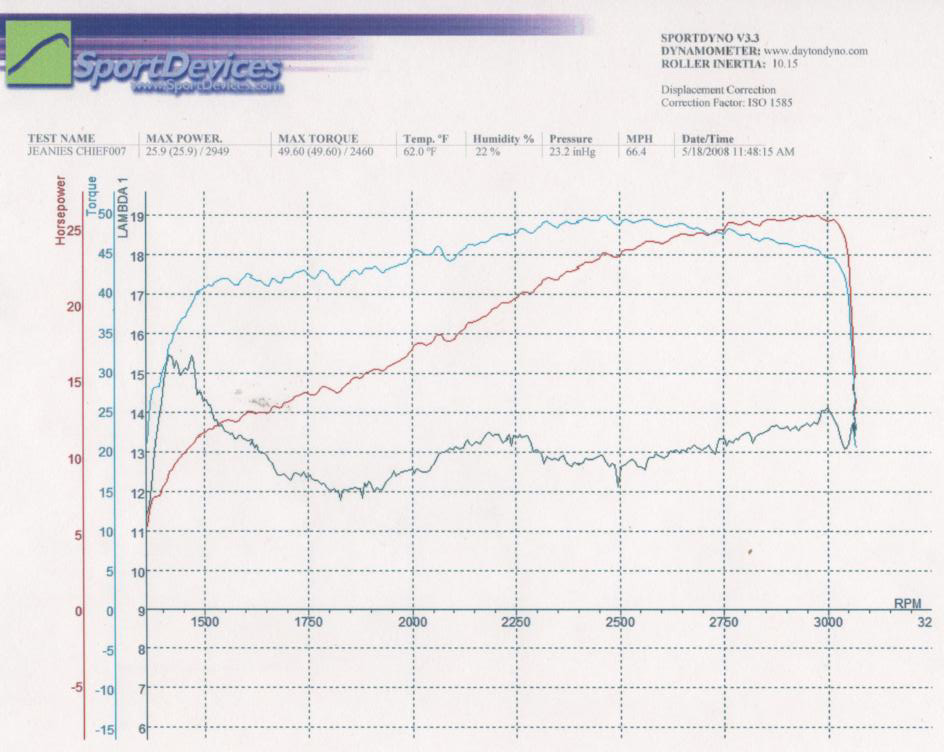
Here is the Dyno Chart for a fairly stock Chief 74", but with modern "Ollie" cam lobes, and Bonneville lifters. It has the original Linkert, and 6 volt points system. Obviously the cams, and lifters would add some more power over a standard 74. It was a new motor, and I didn't want to over-rev it, so I stopped the Dyno run just when the power was heading downward.
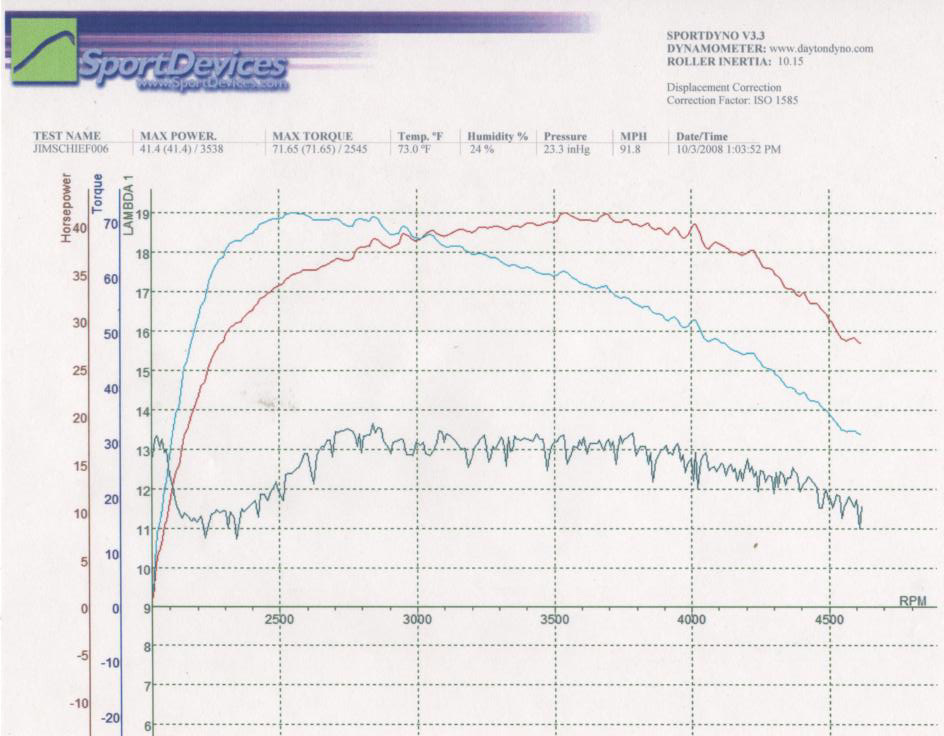
Here is the Dyno Chart for my 1947 Chief, with a fairly stock 80" with Bonneville cams, and lifters. I am using my Keihin CV kit, with the Yost Power Tube jet kit, 12 volt system, and pointless distributor. I have done mild porting to clean-up the ports, and a 3 angle valve job. It has unmodified Jerry Greer repro 80" heads. Pretty stock 80"er, that runs very well. In the next few charts, I will compare this bike to some others.
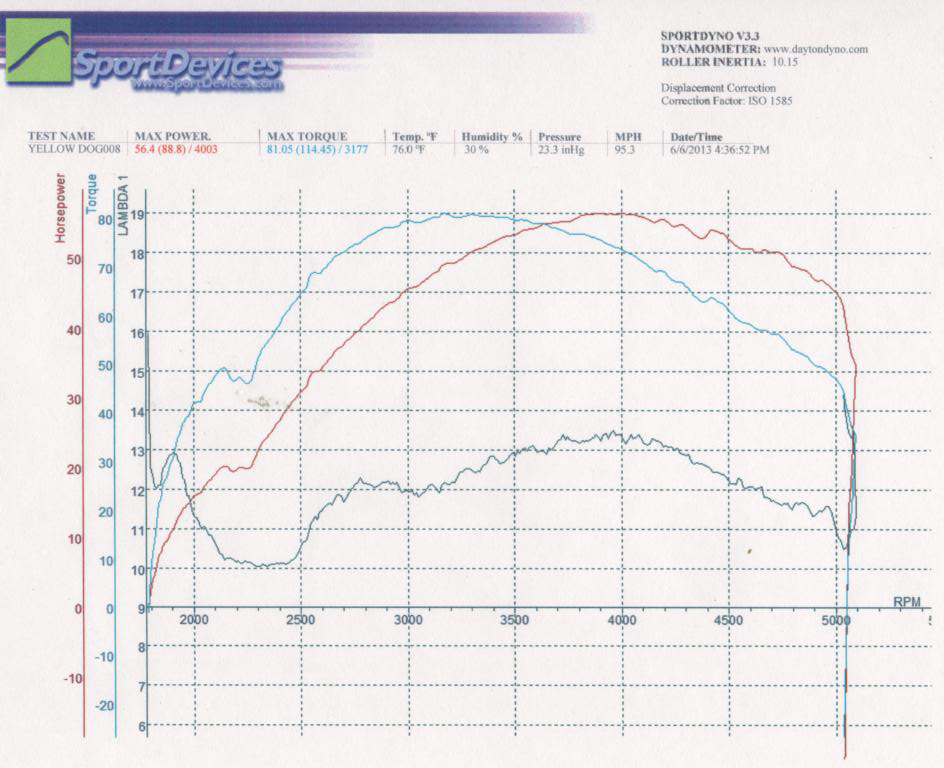
Here is the Dyno Chart for Mike Breeding's famous "Yellow Dog" Chief bobber that I built for him 10 years ago. It's a Bad-Ass! It's a fairly straight forward 80"er with unmodified Greer heads, mild porting, balancing, 12 volt pointless system, and all my special mods. What makes it so strong is the fact that he is running my Keihin CV kit, my 1 3/4" straight tail-pipe, and my "Hot Rod" cam lobes. It has the over-drive 4-speed, and has been lightened. This is the first bike I rode with my new "Hot Rod" cams, and I am very happy the way they turned out. They have the same good low end as the Bonneville cams, but take off in the mid-range. Nice idle sound too! They require Bonneville lifters! This motor makes more than double the power of the Chief 74 with Ollies, and Bonneville lifters!
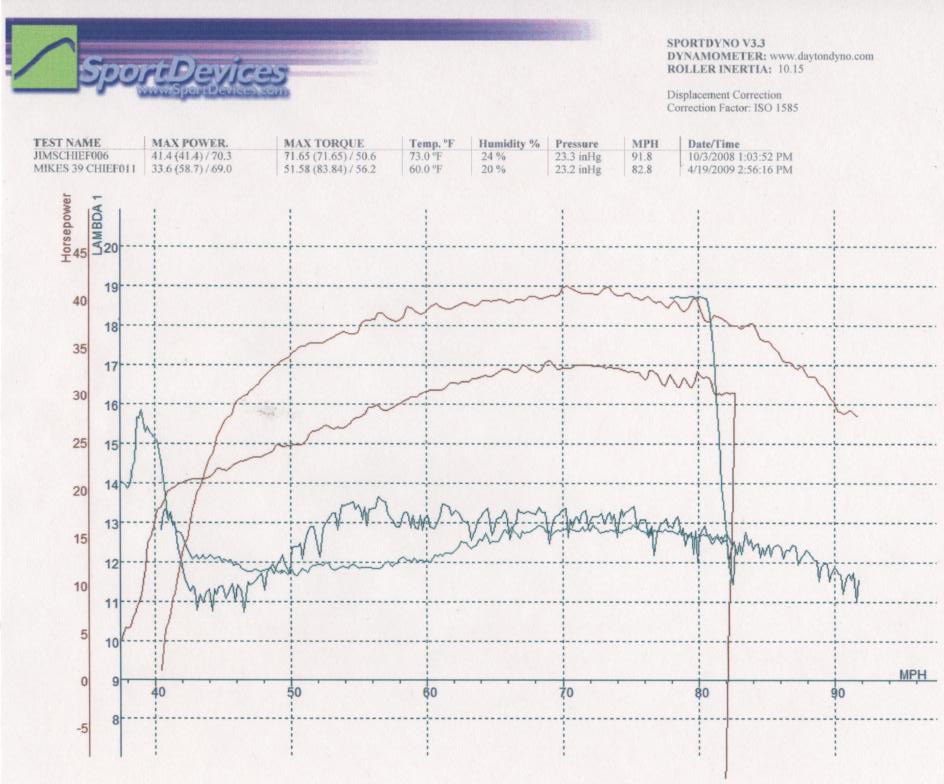
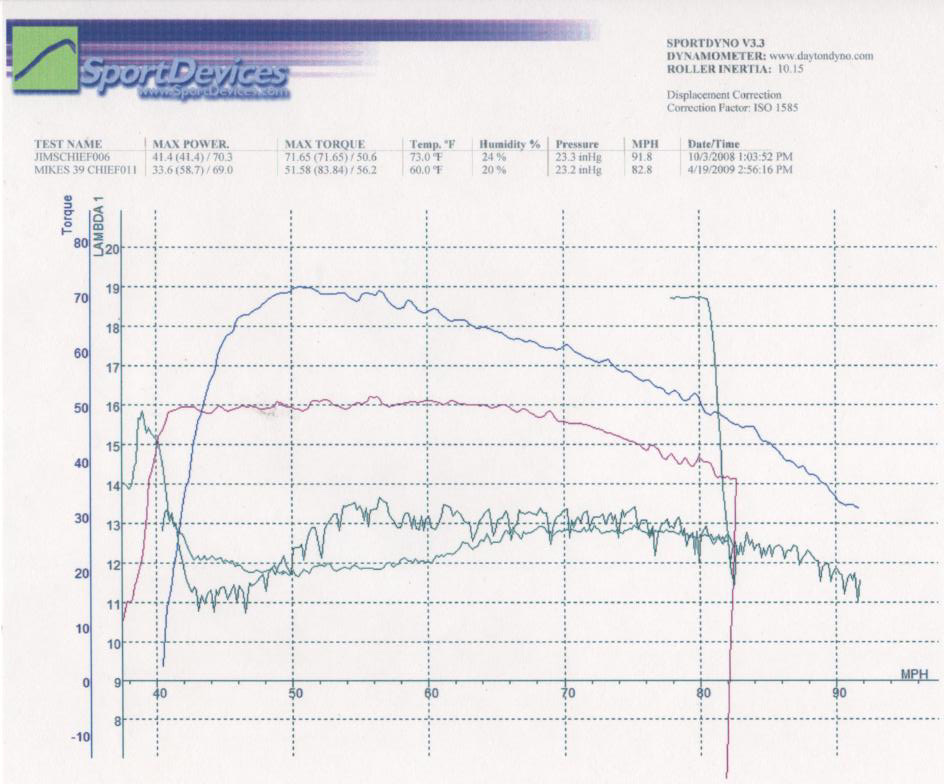
Here is a Dyno Chart comparing my 1947 Chief 80" with Bonneville cams, and lifters, my Keihin CV kit, and 12 volt pointless system, compared to Mike Breeding's bone-stock 1939 74" Bonneville Chief with a Linkert just as it came from the factory. Not apples to apples, but interesting. The upper chart compares horsepower, and the lower chart compares torque. The upper, more powerful curves are from the 80"er, and the jagged lines at the bottom are the air/fuel numbers for both motors.
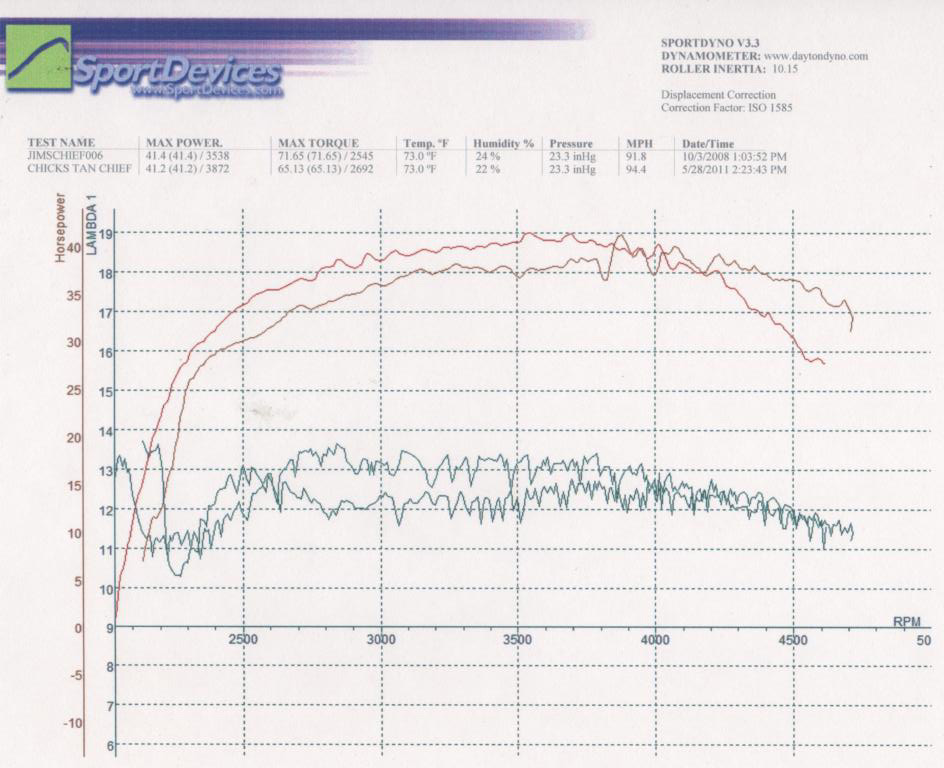
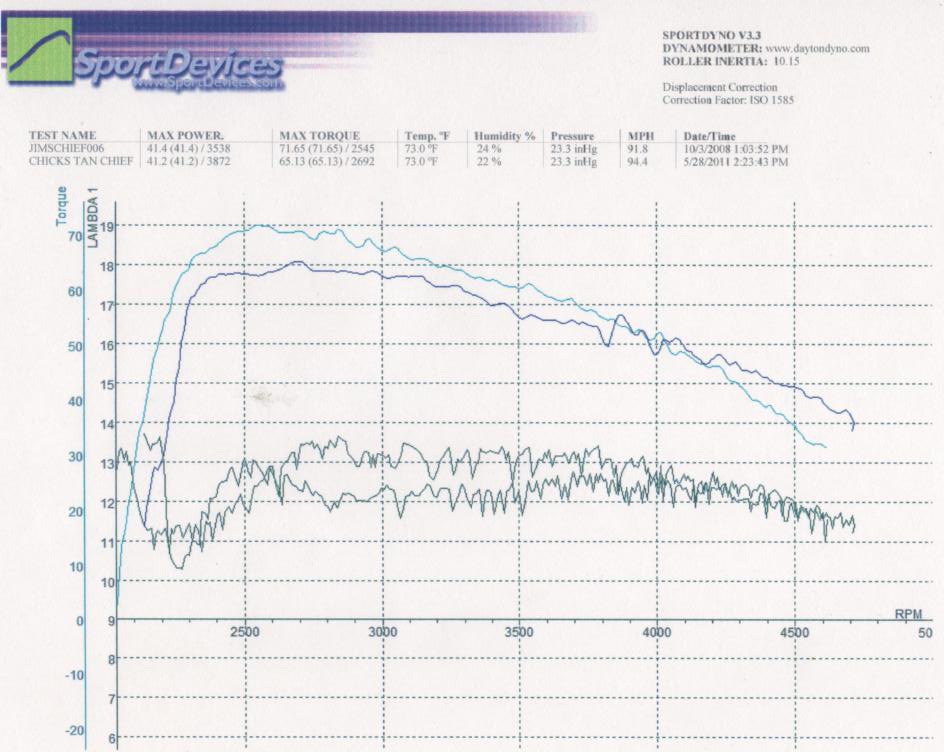
Here is a Dyno Chart comparing my 1947 Chief 80" with Bonneville cams, and lifters as above compared to another 1947 80" Chief with modern "Ollie" cam lobes. Otherwise these are identical motors. I built both bikes for myself, and sold the bike with "Ollies" to my friend Chick (his favorite bike!). This is a good example showing the difference between the cams. The "Ollies" were originally intended as a replacement for the Bonneville setup, and were intended to be used with standard 74" lifters (which I do not agree with. Standard lifters should only be used with standard 74" cams!). Again, the upper chart is horsepower comparisons, and the lower is the torque. Again, the upper power curves are from the Bonneville cam setup. The "Ollies" are a bit weaker at lower RPM, but exceed the Bonneville's power at higher RPM.

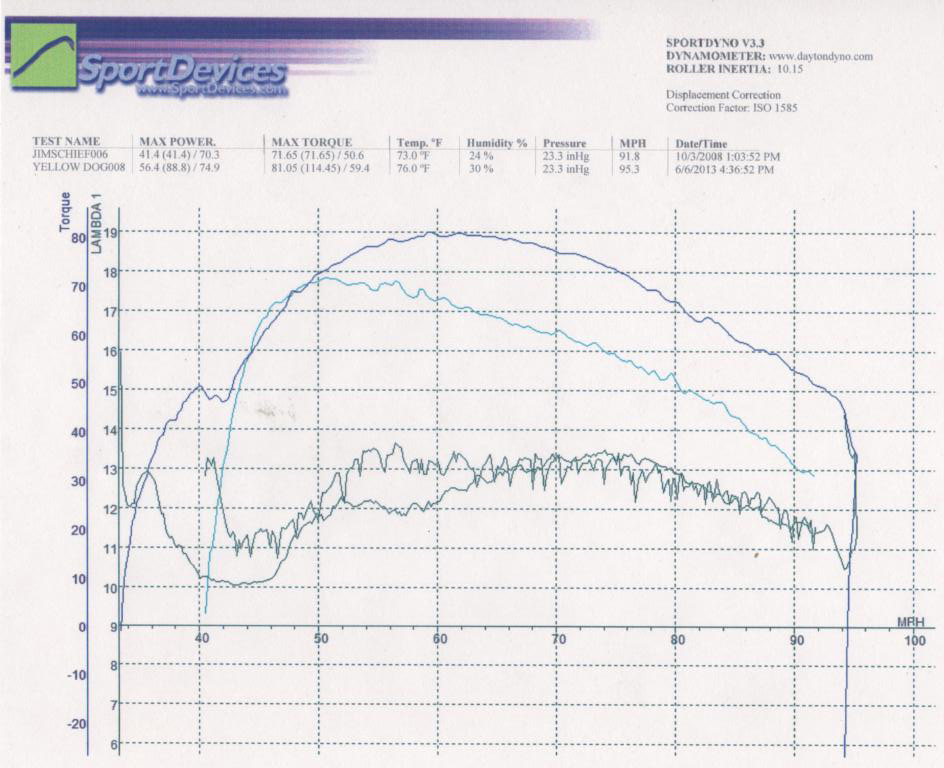
Here is a Dyno Chart comparing my 1947 Chief 80" with Bonneville cams, and lifters, my Keihin CV kit, and 12 volt pointless system, compared to the powerful "Yellow Dog". The Yellow Dog is also a 80" that I built much like my 80" Bonneville, with the only exception being my new "Hot Rod" cams, and my 1 3/4" straight tail-pipe. They have the same CV kit, ignition, pistons, heads, etc. Notice the huge increase in streetable power. The "Yellow Dog" even has the same strong low-end torque of the Bonneville cam setup, but just takes off in the mid-range. The "Yellow Dog" is scary fast! Again, the upper power curves are from the "Yellow Dog".
Scout Dyno Charts
Again, my Dyno is at 7'000 feet MSL, so add 30% to these numbers for sea level power equivalent.
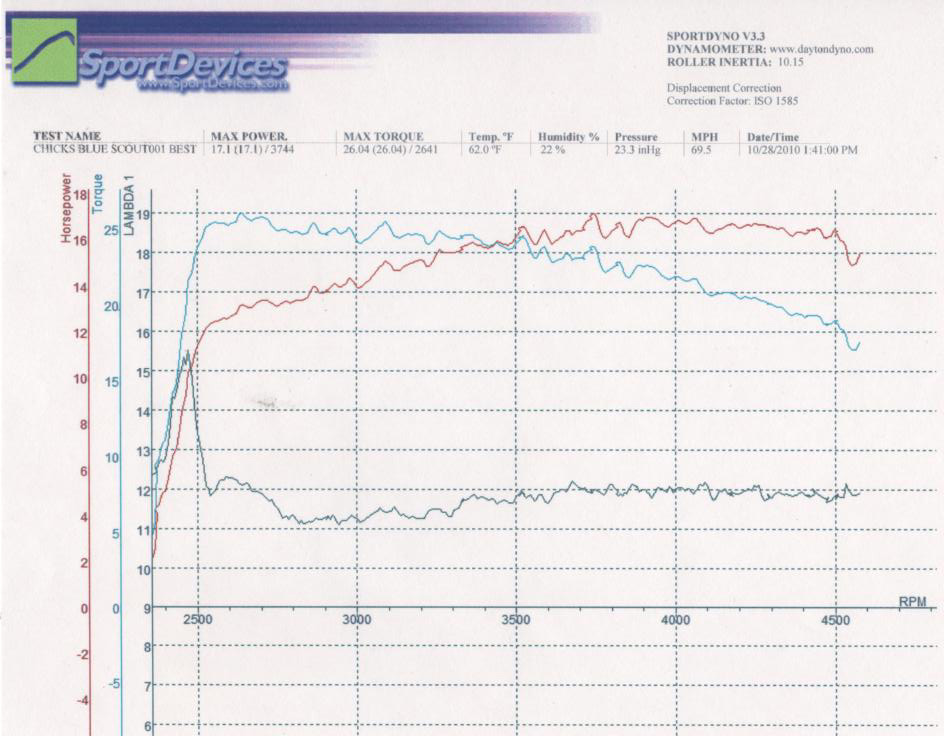
Here is a Dyno Chart for my friend Chick's 1940 Sport Scout. I built it in 1995 as a "Bone Stock" original Sport Scout.
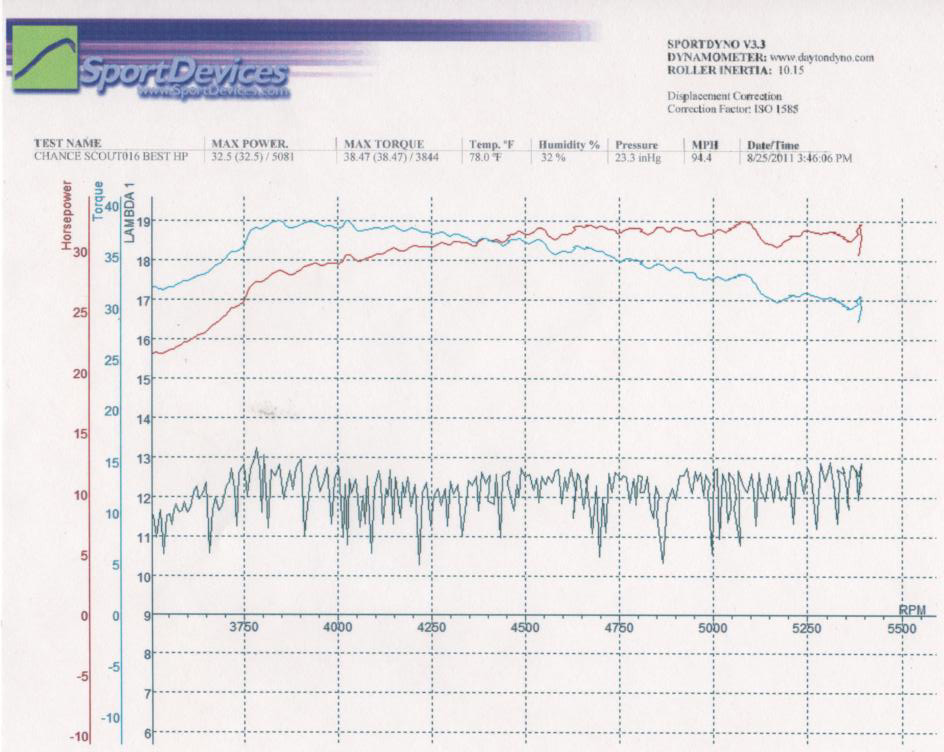
Here is a Dyno Chart for Dick Chance's 1940 Sport Scout Bonneville Salt Flat Racer. It has my "Street/Strip" cams with my Scout racing lifters. The other engine mods are: Joe Hunt magneto, 2-into-1 pipe, pop-up pistons. Nearly double the power of stock.
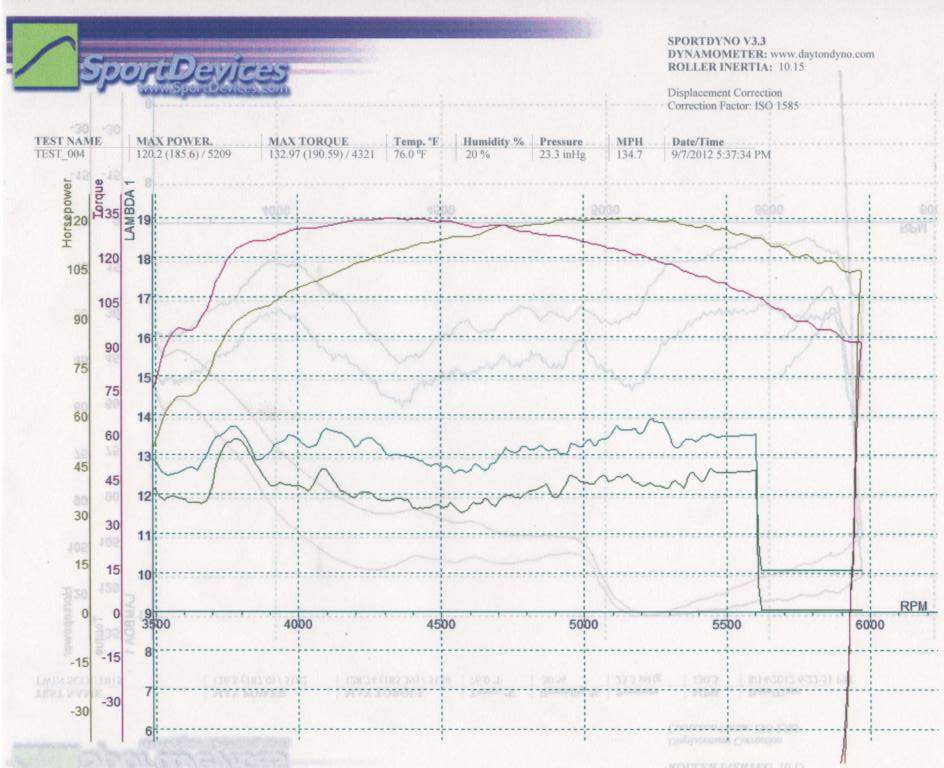
Here is a Dyno Chart for one of my tests on the Twin-Scout out on the salt. The jetting is not yet perfected, and these are my lowest duration LSR racing cams (no NOS!).
CONTACT INFORMATION:
James R. Mosher
1-505-466-7870













